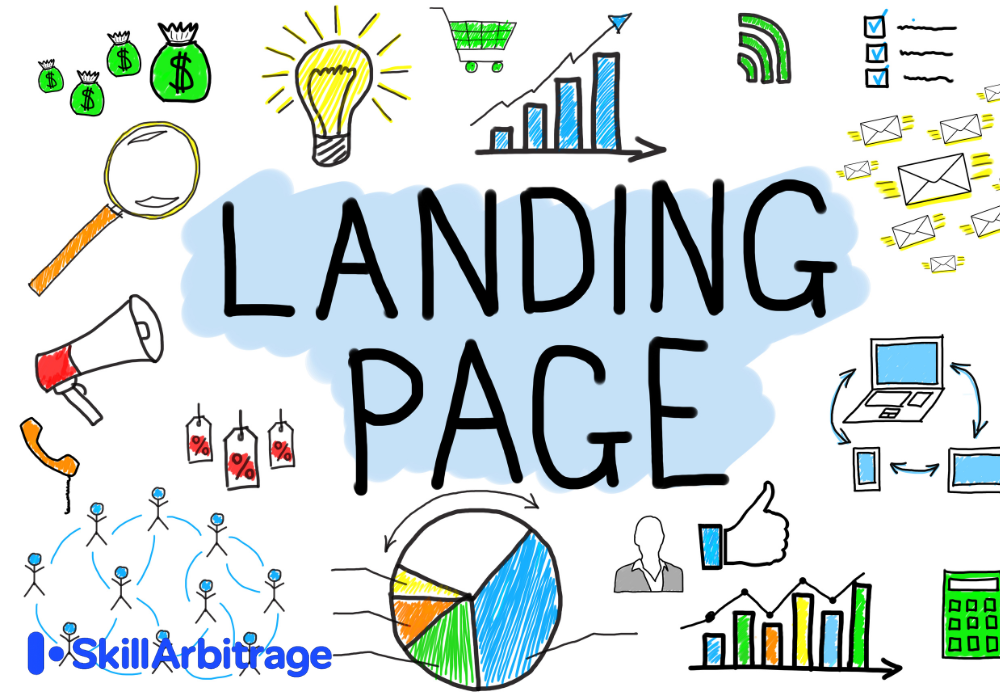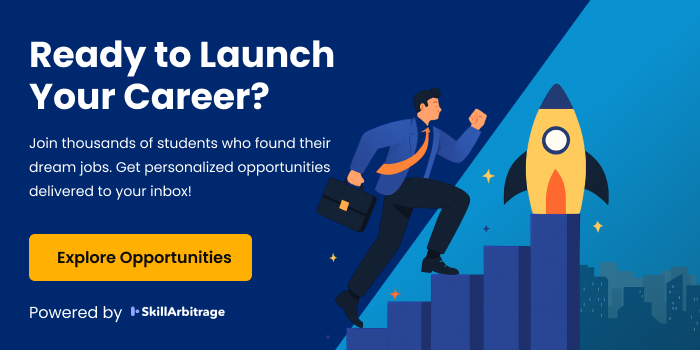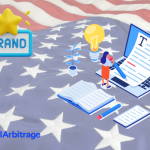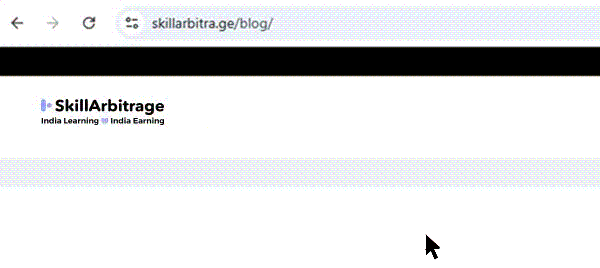This blog will help business owners or marketers write headlines for their landing pages simply by using AI in a way that instantly grabs attention and converts more people.
Table of Contents
Introduction
If someone at the beginning of my journey had given me a guide on how to write high-converting landing pages, my life would have been very different today. I would have saved hours of frustration and a lot of money that was spent on ads that went nowhere.
Nobody guided me, so I kept testing different variations and random lines, but to my surprise, none of them were consistently giving me good engagement. After 6 months of trial and error, I realised that the headline plays a huge role in the success of your landing page.
Trust me when I say that no matter how good your offer is, if the headline doesn’t hook people in the first 3 seconds to read further, they will not read the offer and never get converted.
But you don’t have to worry about this problem because you have found this blog, which exists solely to fix that. I will be showing you a simple step-by-step method to use AI to write headlines that will grab attention, interest them in reading the full landing page, and make them act.
The mistake everyone makes when trying to write a high-converting headline
When people sit down to write a headline for their landing page, they do what feels natural. They try to be clever, creative, and persuasive. They want to write something that sounds smart and catchy. And that’s where things go wrong.
Instead of writing what actually grabs attention and gets clicks, most people write what they like. Not what the reader needs. Let me show you what I mean:
- They write something vague like “Transform Your Business” or “Get the Results You Deserve.” It sounds polished. But it means nothing. The reader has no idea what’s being offered, why it matters, or why they should keep reading. So they bounce.
- They copy headlines from other websites in their niche, thinking, “If it worked for them, it’ll work for me.” But that headline worked in a totally different context, for a different product, audience, and brand voice. Copying without context leads to flat conversions.
- They try to sound smart or unique, but forget to be clear. For example, “Revolutionizing the Future of Engagement.” What does that even mean? If your reader has to pause to figure it out, you’ve already lost them.
- They dump too many features or try to say everything at once. Headlines are meant to hook, not explain. But in trying to be complete, the message gets lost, and nothing stands out.
- They write it last, in a rush, after building the rest of the page. So instead of a strategic hook, they end up with a filler line. And then wonder why the page doesn’t convert.
All of these mistakes feel like you’re doing the right thing. But in reality, they make your page invisible. They sound nice in your head, but they don’t stop a real person from scrolling.
And the truth is, writing a powerful headline isn’t about being a wordsmith. It’s about understanding what makes people stop, feel something, and want to know more.
That’s where AI comes in. Used the right way, AI doesn’t just save time, but it gives you headline variations based on proven formulas, psychological triggers, and emotional angles that most people miss.
But to get results, you can’t just prompt ChatGPT with “Write me a headline.” You need to guide it with the right context and train it like a creative partner.
So don’t waste time guessing, copying, or second-guessing your headline again. Let me show you exactly how to use AI to write landing page headlines that actually work.
So, what could be the steps to generate a high-quality AI-powered headline for a landing page
Step 1: Get crystal clear on what you’re selling
Before you even touch ChatGPT or any other AI tool, this is the first thing you need to get right. And most people skip it. They rush to generate headlines or copy without fully understanding what their offer actually is.
But if your offer is not clear, even the smartest AI won’t help you. You’ll end up with vague headlines that sound nice but don’t convince anyone to buy. That’s why this step is so important.
Your goal here is to write down exactly what you’re offering, who it’s for, what problem it solves, and what result it promises.
Once that’s done, you’ll be able to give the AI a solid input to work with, and that’s when the output starts becoming sharp, focused, and high-converting. Here’s how to do it, step by step:
1. Write down in one simple line what you’re offering
Don’t overcomplicate it. Just write in plain language what you’re selling. Think of how you’d explain it to a friend who knows nothing about your business. For example:
“I’m offering a 4-week online course that teaches people how to start freelance writing and get paying clients, even if they’ve never written professionally before.” That’s it. No buzzwords. Just clear and specific.
2. Define exactly who this is for
If your offer is for “everyone,” it’s for no one. You need to get specific. Who is this designed to help? Beginners? Freelancers? Small business owners? Busy professionals? For example:
“This course is for beginners who want to earn money online through freelance writing but don’t know where to start.” Once you know who you’re talking to, your headlines will automatically become more relatable.
3. Write the core problem your offer solves
Nobody buys just because your product looks nice. They buy because they have a pain, a problem, or a challenge, and your offer promises to fix that. So ask yourself: “What is the customer struggling with before they come to me?”
For example: “They want to earn online, but they don’t know how to find clients, what to write, or if they’re even good enough. My course clears that confusion and gives them a roadmap.” Now you’ve locked in the pain point. And that’s what your copy needs to speak to.
4. Write the result they will get if they say yes
This is what makes people take action. Don’t just say “it’s helpful.” Say what exactly will change for them once they go through your product or service. For example:
“By the end of 4 weeks, they’ll have writing samples ready, know how to pitch clients, and be able to land their first paid project.”
And once you’ve written all four parts, what you’re offering, who it’s for, the problem it solves, and the result it gives, just combine them into one short paragraph.
That single paragraph becomes your input to the AI. It gives the AI context, clarity, and direction, so your headlines come out focused and ready to convert. Here’s an example so you can see how this comes together:
Let’s say you’re creating a landing page for a productivity coaching program. Your notes might look like this:
- What are you offering? “A 6-week coaching program to help professionals beat procrastination and get more done with less stress.”
- Who is it for? “Busy professionals or entrepreneurs who constantly feel behind and overwhelmed.”
- What problem does it solve? “They know what they need to do but keep delaying important work, which is affecting their performance and confidence.”
- What outcome does it promise? “They’ll learn a proven system to overcome procrastination, create structure, and finally feel in control of their time.”
Now, combine it into one paragraph:
“I’m creating a landing page for a 6-week coaching program that helps busy professionals overcome procrastination and feel in control of their time. It’s for people who feel behind and overwhelmed, even though they know what they should be doing. This program gives them a proven structure to get more done with less stress and build back their confidence.”
That’s it. You now have a strong input that will make the AI generate better headlines, better subheadlines, and overall sharper copy, because it understands exactly what you’re selling and who you’re selling it to.
This step is what makes the AI useful. Do this properly, and the next part becomes 10 times easier.
Step 2: Choose the hook angle before you ask AI to write
Once you’re clear on what your offer is, the next big step is to decide how you want to position it. And this is where most people mess things up.
They go to AI and say, “Write me a good headline,” but they don’t tell the AI what kind of emotion or angle to use. And without that direction, the AI just guesses. Most of the time, it guesses wrong.
If you want headlines that actually make people stop and pay attention, you need to tell the AI which angle to lean on. Is it about the benefit? The pain? A bold belief? A surprising question?
That’s what this step is about. You’re not writing the headline yet, but you’re just choosing the direction.
1. Ask yourself: What’s the strongest angle I can lead with?
Go back to your offer, the problem it solves, and the outcome it promises. Now ask yourself: What’s the most emotionally powerful part of this?
Is it the result they want? The struggle they’re facing right now? A surprising truth they don’t know yet? A bold message that challenges the usual advice? Think about what would make you stop and pay attention if you were in their shoes. That’s your hook.
2. Pick 1 or 2 angles that fit your offer best
You don’t need to try every possible angle. Just pick 1 or 2 that feel most relevant for your audience. That way, when you use the AI tool, you’re giving it clear direction, and the results will come out sharper and more useful.
Here are the four most powerful headline angles to choose from:
- Benefit-Driven Hook
This angle works best when the result you’re promising is clear and desirable. It focuses on what they’ll get if they say yes. How to write it: Use phrases like “Get…”, “Learn how to…”, “Discover how to…”, “Achieve X without Y.”
For example: “Get Freelance Clients Without Cold Pitching” or “Learn How to Double Your Productivity in Just 10 Minutes a Day”
When to use it? Use this when your offer leads to a result your audience really wants and believes they can get.
- Pain-Point Hook
This one works when your audience is already feeling stuck and knows what’s wrong. You just need to call it out and offer a better way. How to write it: Start with “Still struggling with…?” or “Tired of…?” or “The truth about why you’re stuck…”
For example: “Still Struggling to Land Your First Client? Try This Instead” or “Tired of Writing Content No One Reads?” When to use it? Use this if your offer solves a common frustration they’re already feeling.
- Question-Based Hook
This angle creates curiosity. It works by tapping into a knowledge gap or exposing a blind spot. How to write it: Use questions like “What’s the #1 mistake…?”, “Do you know how…?”, “Ever wondered why…?”
For example: “What’s the #1 Reason Your Landing Page Isn’t Converting?” or “Do You Know How Top Freelancers Write Proposals That Win?” When to use it? Use this when your offer reveals something new, teaches something surprising, or uncovers hidden mistakes.
- Contrarian Hook
This one is for when you want to challenge the status quo and stand out in a crowded niche. It grabs attention by going against the usual advice. How to write it? Use lines like “Why I don’t…”, “Forget everything you know about…”, or “The real reason X doesn’t work.”
For example: “Forget Cold Emails. This Gets Clients Faster” or “Why Morning Routines Are Overrated (And What to Do Instead).” When to use it? Use this when your offer flips the usual advice and gives people a better alternative.
Now apply this to your offer. Let’s say you’re selling a productivity course for freelancers. You might choose:
- Benefit-driven: “Get 8 Hours of Work Done in 4”
- Pain-point: “Still Working 12-Hour Days and Getting Nothing Done?”
Now, when you go to ChatGPT or any AI tool, you don’t just say, “Write me some headlines.” You say: “Write me 5 landing page headlines using a benefit-driven angle for this offer…” and “Now give me 5 using a pain-point angle…”
And just like that, the AI knows what direction to take. You’re not guessing. You’re guiding. This is what makes the difference between a headline that sounds good and one that actually sells.
So, before you generate anything, stop and choose your hook. That’s what sets you up for success in the next step when the writing begins.
Step 3: Feed AI a simple prompt (the right way)
Now that you’re clear on what you’re selling and you’ve picked the hook angle you want to use, it’s time to actually write with AI. This is where most people expect magic and get disappointed.
They open ChatGPT and type something like, “Write a good headline for my landing page.” And what comes back? A bunch of bland, generic lines that sound okay but don’t actually convert. Why does this happen?
Because AI is not a mind reader. It’s just a tool that works based on what you give it. If your prompt is vague, the output will be too. So the goal here is to guide AI like a smart assistant and give it everything it needs so it can help you brainstorm inside a focused box.
1. Open ChatGPT and prepare your input
You don’t need to buy a fancy AI tool. Just open ChatGPT and start a new chat. Now, before you write the prompt, make sure it includes these five things:
- Who your audience is
- What result do they want
- What objection or pain is holding them back
- What your product or service is
- What kind of hook angle do you want (benefit, pain, emotion, etc)
This is the full context the AI needs to create something useful, not just clever words, but headlines that speak to the right person at the right time.
2. Use this simple prompt formula
Here’s the structure you’ll use. You can tweak it as needed, but don’t skip any part:
“Write 10 landing page headlines for [audience] who want to [goal] without [pain or objection]. The product is a [product type]. Focus on [hook angle].”
Let’s break this down with plain examples:
- [audience] = beginners, freelancers, parents, business owners
- [goal] = land clients, lose weight, grow faster, save time
- [pain or objection] = no experience, low budget, lack of confidence
- [product type] = course, coaching program, software, template pack
- [hook angle] = fast results, emotional benefit, pain point, bold message
Once you plug in your info, this prompt becomes incredibly powerful.
3. Fill in the blanks for your own offer
Let’s say you’re selling a 4-week course that helps complete beginners land freelance writing jobs even if they’ve never written professionally before. Your final prompt might look like this:
“Write 10 landing page headlines for beginners who want to start freelance writing without previous experience. The product is a 4-week online course. Focus on fast results and income potential.”
Why does this work? You’re giving the AI a complete picture. Now it knows:
- Who is it writing for: beginners
- What they want: to start freelance writing
- What’s holding them back?: no experience
- What the product is: a 4-week course
- What angle to use: fast results and income
You’ve done all the thinking, and now the AI just has to write.
4. Run the prompt and pick the best ones
Now hit enter. You’ll get 8–10 headline options in a few seconds. Some might be okay, some might need tweaks, and a few will be surprisingly strong. Examples you might get:
- “Start Freelance Writing in 30 Days Even If You’ve Never Written Before”
- “Land Paid Writing Gigs Without a Portfolio or Degree”
- “Make Your First ₹10,000 as a Freelance Writer (No Experience Needed)”
These are not random. These are aligned with your offer, your audience, and your angle because you gave the AI a clear direction. Pick the 2–3 that feel strongest. You’ll refine and test those in the next step. And that’s it.
You don’t need to be an expert writer or a prompt engineer. You just need to be clear and specific with what you give the AI. That’s how you turn it into a real assistant that helps you generate headlines worth testing, fast.
Now that you’ve got a few solid options, let’s move to the next step, which is how to fine-tune and pick the winner.
Step 4: Refine the AI headlines and add your human touch
AI will give you a bunch of raw headlines. But don’t copy-paste them straight into your landing page. That’s where most people mess up.
Because even if the headline looks fine at first glance, it usually needs tightening, tweaking, or a small punch of clarity to actually convert.
This step matters because a headline that’s 80% good is still not good enough. You might think, “This works,” but your reader won’t feel the same. And in marketing, “almost” is what makes people scroll past.
Your job here is to take the AI’s best outputs and sharpen them, so they feel crisp, specific, and built for the person you’re trying to reach. Here’s how to do that step by step:
1. Skim the list and pick 2–3 solid ones to work with
Go through the headlines AI gave you. Don’t try to overanalyze everything. Just ask yourself: Which ones actually make you pause? Which ones would you click if you were the customer?
For example, if AI gives you:
- “Learn Freelance Writing Fast! No Experience Needed”
- “Start Writing Online Today! Get Paid to Write”
- “Become a Writer in Just 30 Days (Even If You’ve Never Written Before)”
You might instantly feel that the first and third are stronger. They speak directly to beginners and promise a result. Those are the ones worth improving.
2. Tighten the language so it sounds sharper
AI often uses soft, vague phrases. Your job is to tighten them up so they sound specific and powerful. Start by:
- Cutting anything that feels like filler
- Swapping weak verbs for stronger ones
- Making the outcome feel real instead of abstract
Let’s fix this headline: “Learn Freelance Writing Fast! No Experience Needed”
Make it tighter: “Land Your First Freelance Writing Gig in 30 Days! No Experience Required”
Why this works:
- “Land your first gig” feels more real than “learn”
- “In 30 days” adds urgency
- “No experience required” sounds more natural and clear
3. Remix it into a few punchy variations
Once you’ve got a good version, don’t stop there. Try a few small tweaks to shift the tone, structure, or emotional pull. Start with: “Land Your First Freelance Writing Gig in 30 Days! No Experience Required”
Then remix into:
- “Start Freelance Writing and Get Paid in 30 Days! No Portfolio Needed”
- “Break Into Freelance Writing in 30 Days (Without Prior Experience)”
- “Get Your First Paid Writing Job in Just 30 Days! Zero Experience Needed”
You’re not rewriting the whole thing but just testing different angles to see which one hits hardest.
4. Add micro-specificity if it still feels generic
Sometimes, a headline is almost there, but still sounds too general. In that case, ask:
Can I add a number, timeframe, or detail that makes this feel more real?
For example: “Become a Writer in 30 Days” to “Get Your First ₹10,000 Writing Project in 30 Days”
Now it’s not just about identity (“becoming a writer”), but it’s about outcome (earning money). That’s what people care about. That’s what makes them click.
5. Run a quick gut check before you pick the winner
You’ve now got 3–4 refined headlines. Before you choose the final one, run each of them through this mini checklist:
- Would I click this if I saw it as a total stranger?
- Is it specific, not vague?
- Does it clearly promise a result or outcome?
- Is every word necessary, or can I trim more?
- Can someone understand it in 5 seconds or less?
If it fails even one of these, revise. Don’t settle until at least one of your headlines checks every box. And that’s it. You started with raw AI output. You picked what felt strong. You tightened the language, tried variations, added specificity, and ran it through a gut check.
Now you’re not guessing, but you’re working with tested clarity. You’ve got a real headline that speaks to the right person and sets up your offer to convert. That’s the power of combining AI with your own human filter.
Conclusion
The steps I’ve shown you are the same ones I use—and the same ones I’ve seen smart marketers, copywriters, and business owners use to consistently write headlines that grab attention and drive more conversions.
It doesn’t matter if you’re writing your first landing page or your hundredth. Just follow these steps, use the AI properly, and you’ll never have to stare at a blank headline box again. You’ll have real options that actually make people stop, read, and click.
Once you’ve written your headline, send it my way. I’d love to see what the AI gave you, what you improved, and which one ended up working best. Either way, you’ll be 10 steps ahead of anyone still guessing what sounds good.
Frequently asked questions (FAQs)
- What if the AI keeps giving me headlines that sound robotic or boring?
That usually means your input isn’t clear or specific enough. Most people give short, vague prompts and then wonder why the AI sounds generic. Fix that by feeding it more context like who it’s for, what they want, what’s stopping them, and what kind of tone you want. The more you guide it like a real assistant, the better the output becomes.
- How do I know which headline will actually convert best?
You won’t know for sure until you test it, but if a stranger reads it and instantly understands what’s being offered and why it matters, you’re on the right track. If they have to pause and think, or if it could apply to 10 other businesses, it needs work.
- Is there a best angle among benefit, pain, question, and contrarian?
There’s no universal best, but only the best for your offer and your audience. Benefit hooks work great when the outcome is exciting and believable. Pain hooks win when people are actively frustrated. Questions work when curiosity is strong. Contrarian hooks grab attention fast but need to be backed with logic. If you’re unsure, test 2 angles side by side and see which one gets more clicks.
- What if I have multiple offers or different target audiences?
Then you need to treat each one separately. Don’t try to write one headline that fits all. Create a clear offer paragraph for each product or audience segment and run separate prompts. This way, the AI knows exactly who it’s speaking to, and your headlines will feel sharper and more relevant instead of watered down.
- Can I use these headlines in ads or emails too?
Yes, as good headlines are flexible. If one of your AI-generated or refined headlines really pops, try it as a subject line, ad hook, or even the first line of an email. Just make sure the context still fits.
- Should I include the product name in the headline?
Only if the product name adds clarity or credibility. If it’s something well-known or authority-building (like “Google Ads Mastery”), then yes. But if the name doesn’t mean much on its own, skip it. You can always introduce the name in the subheadline or the next section.







 Allow notifications
Allow notifications
